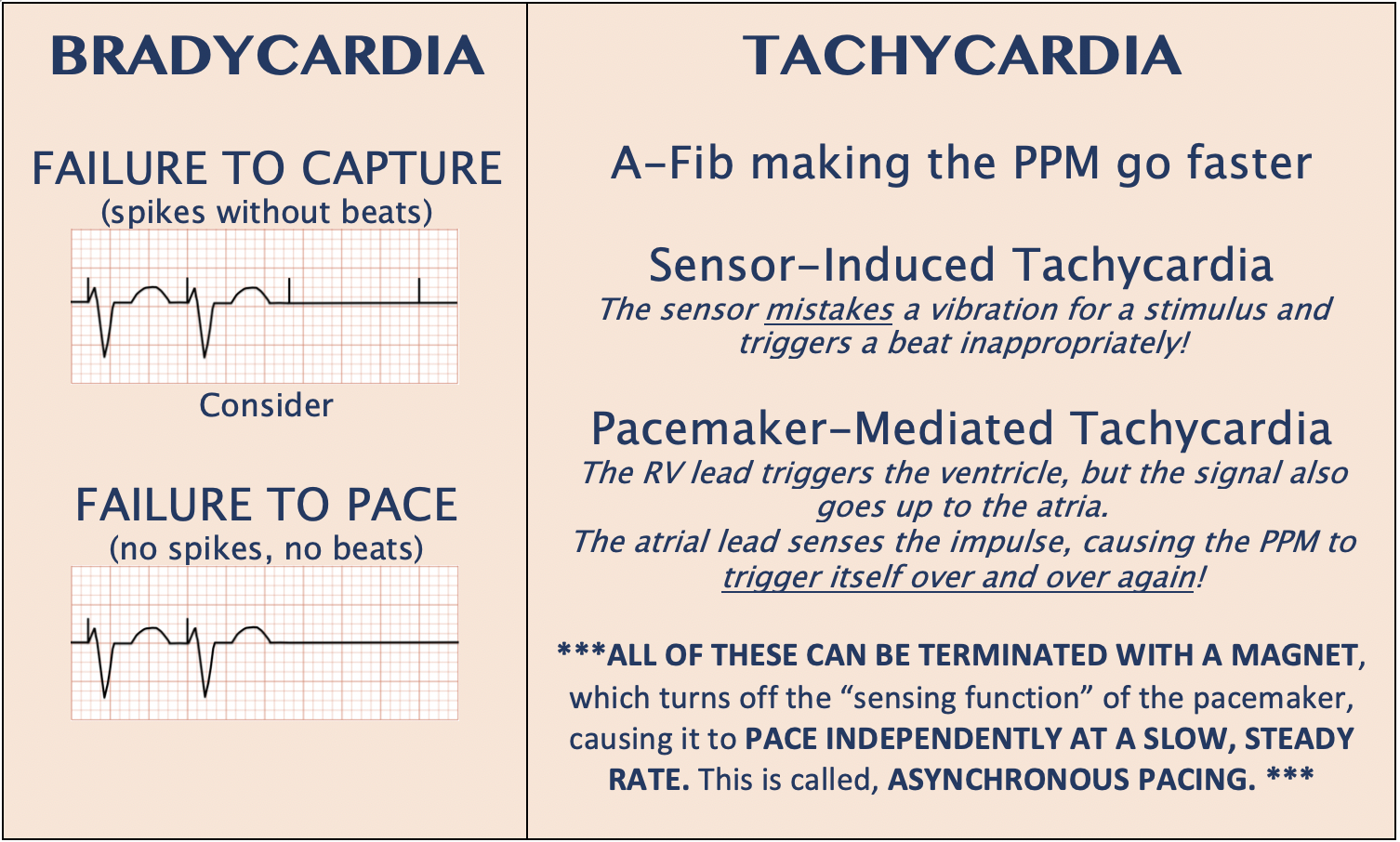EKG is neither sensitive nor specific for PE, but there are some clues that can be another data point in your decision making. Remember, EKG stands for electrocardiogram, not pulmonary-artery-gram. The absence of these findings should not decrease your suspicion of PE.
As we all know, EKG can be completely normal in PE; sometimes, it can have the following changes. Changes in EKG occur due to acute cor pulmonale, resulting in acute dilatation and partial failure of the right side of the heart and the resultant abnormal electrical activity.
Rate & Rhythm findings: Sinus tach, new onset atrial fibrillation
Axis findings: Right axis deviation, S wave in lead I. Remember lead I is looking at the left side of the heart, so a pronounced S wave and thus overall negative deflection of lead I means there is right axis deviation
Interval findings: QRS complex: New right bundle branch block. Remember, the RV contains the right bundle and poor blood flow to the RV due to dilatation and resultant ischemia to the right bundle results in the block.
Ischemia findings:
Delayed R wave progression due to dilatation of the RV and resultant shift in electrical activity towards the right side
ST segment changes:
(S1)Q3T3
Anterior T wave inversions (almost mimicking Wellens - apparently in Steve Smith’s book, there is a way to tell the difference from T wave inversions in Wellens/ACS vs T wave inversions from PE/pseudo-wellens, but they look identical to me)
Anterior ischemia along with inferior (lead III) inversions is more specific than just anterior ischemia (which can be Wellens/ACS)
V1 ST-Elevation due to RV ischemia
Diffuse ST depression with reciprocal STE in aVR due diffuse subendocardial ischemia in obstructive shock from a PE
Hypertrophy findings: A dominant R wave in V1 and other evidence of right ventricular hypertrophy on EKG (right atrial enlargement) speaks against an acute process such as PE. The patient likely has chronic cor pulmonale.
Those with more hemodynamically significant PEs are more likely to have these changes. Conversely, having some of these findings below in a patient with known PE such as anterior T wave inversions, ST depressions with reciprocal aVR elevation, & sinus tachycardia makes the patient at high risk or in RV failure (so maybe don’t overload that RV with 3L of fluids or cardiovert the compensatory atrial fibrillation). Don’t forget the differential for T wave inversions/depressions also includes other pathologies such as ACS.
https://litfl.com/right-ventricular-strain-ecg-library/
https://litfl.com/ecg-changes-in-pulmonary-embolism/
Vanni, Simone & Polidori, Gianluca & Daviddi, F. & Ponchietti, Stefano & Curcio, M. & Conti, Alberto & Vergara, Ruben & Grifoni, S.. (2007). Right Ventricular Strain Pattern at ECG Predicts Early Adverse Outcome in Patients With Acute Pulmonary Embolism and Normal Blood Pressure. Journal of Emergency Medicine - J EMERG MED. 33. 336-336. 10.1016/j.jemermed.2007.08.043.
https://emergencymedicinecases.com/ecg-cases-26-pulmonary-embolism-and-acute-rv-strain/








